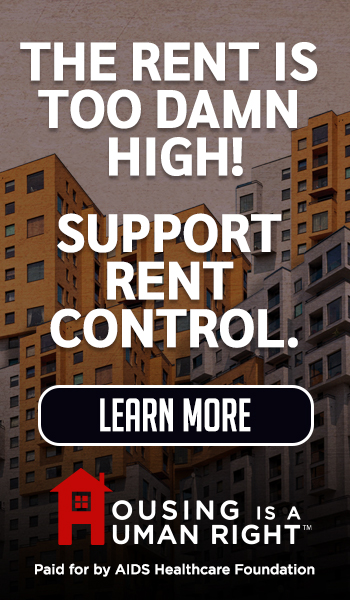Comments
HOMELESSNESS - Los Angeles has long been a city of contradictions. The glamorous allure of Hollywood and the sprawling, sun-soaked beaches stand in stark contrast to the everyday struggles of many residents, particularly when it comes to finding affordable housing. The city's rapidly rising housing costs, paired with a growing divide between the rich and poor, have given rise to a housing crisis that has reached new heights in recent years. At the heart of this crisis is the overproduction of luxury housing, which often stands vacant or is rented out at inflated prices, making it inaccessible to the vast majority of residents. While some may point to the shortage of affordable units as the central issue, the real problem is much deeper: the speculative financial practices that fuel this market. In particular, the rise of arbitrage companies—middlemen who rent out individual rooms in luxury apartments—has exacerbated the crisis and helped create a model where developers can profit without ever truly addressing the needs of the city's residents.
The Landscape of Vacancy Housing: The first issue at hand is the lack of transparency when it comes to tracking vacancy rates in Los Angeles. Many people are surprised to learn that there is very little reliable data on the vacancy status of properties in the city. The U.S. Census Bureau collects some data, but this information is often based on proxy methods, which rely on contacting people in nearby buildings and units to inquire about occupancy rates for properties that haven't responded to the Census. This system is far from perfect and fails to provide a clear picture of just how many vacant units there are in the city. One potential solution to this issue is the use of electric meter data from the Department of Water and Power (DWP), which could reveal which units are not using power. However, this data is not readily available for public use, which further limits the ability of policymakers and citizens to understand the true scope of the vacancy issue.
Without this crucial data, it is easy for developers to take advantage of the system and keep units vacant while still profiting. Developers can secure favorable loans from financial institutions based on the projected rental income from market-rate units, even if the units remain empty. In many cases, these luxury apartments are built with the assumption that they will be filled quickly at high rents, but the reality is much different. The glut of luxury units far exceeds demand, and as a result, many of these units remain unoccupied for extended periods.
Arbitrage Companies: Renting Out Rooms, Not Units: A key factor contributing to the growing vacancy problem is the rise of arbitrage companies. These middlemen companies have developed a new model for renting out units in luxury buildings, but instead of renting out entire apartments, they rent out individual rooms within those units. This practice is part of a broader trend in the housing market, where the financialization of real estate has led to a situation where housing is treated as a commodity rather than a necessity.
In this new model, arbitrage firms typically target larger units, such as two-bedroom or three-bedroom apartments, and subdivide them into smaller rooms. For example, a large master bedroom in a two-bedroom apartment might be converted into two smaller rooms, each rented to a separate tenant. The tenants share the master bathroom, creating a living situation that is akin to dormitory-style housing rather than a private, fully equipped apartment. These subdivided rooms are rented out for $2,000 or more per month—far below the $5,000 to $6,000 rents that luxury apartments typically command.
But the arbitrage firms take advantage of this by renting out multiple rooms within a single apartment, thereby increasing the density in the building and maximizing their profits. The developers, on the other hand, benefit from not having to manage the building themselves. The need for on-site managers, which can cost between $100,000 and $150,000 annually, is eliminated by the arbitrage firms, which handle the leasing and management of the rooms. This arrangement provides developers with an additional revenue stream while keeping their buildings "occupied"—at least in the short term—without having to deal with the complexities of managing affordable housing.
However, while this model might appear to offer a solution to vacancy, it comes at a steep cost to residents. The tenants who move into these subdivided rooms are often forced to accept a lower standard of living than they would in a fully private apartment. The lack of privacy, the shared bathroom spaces, and the diminished sense of autonomy are all trade-offs that tenants are forced to make in exchange for a more affordable place to live. However, even this affordability is relative: while these room rentals may cost less than traditional luxury apartments, they are still beyond the reach of many Angelenos, particularly those in need of truly affordable housing.
Developer Bonuses: The Incentive to Build Higher: One of the reasons why you see new buildings sprouting up all over Los Angeles, particularly buildings taller than three stories, is due to the developer's bonus program. In this system, developers are incentivized to build larger buildings than would be allowed under regular zoning laws by offering a bonus for increasing the number of units or floors in a building. This bonus system often results in high-rise luxury apartments being built in areas where zoning laws restrict such developments.
If you walk down the street and see new buildings that are taller than three stories, chances are these buildings were constructed with the benefit of a developer's bonus. Developers can increase the size and density of their projects in exchange for setting aside a percentage of the units as affordable housing—typically around 10%. However, as discussed earlier, these affordable units are rarely rented out as affordable housing. Instead, they sit vacant for decades, waiting for the day when they can be rented out at market rates after the 50-year restriction expires. The number of estimated vacant affordable housing might be up to four thousand units, approximately equal to two-thirds the number of total units built in Los Angeles in 2024.
This system creates a situation where the majority of the building is made up of luxury market-rate units, which are rented out at high prices. Developers can profit from these units while claiming to provide a small number of affordable units, which are usually smaller and less desirable. The affordable units, therefore, often remain empty because they do not fit the needs of the wealthy tenants that the luxury building is designed to attract.
The Impact of Speculative Investment: One of the driving forces behind the overproduction of luxury housing is speculative investment in real estate. Many of the new luxury buildings in Los Angeles are purchased not by residents but by corporate investors, real estate trusts, and other entities looking to profit from the appreciation of property values. These investors are less interested in providing affordable housing than in securing a profitable return on their investments. They purchase properties with the expectation that the value of the land and the building will increase over time, and they are willing to leave units vacant for extended periods if it means they can sell or refinance the property at a higher price later.
This speculative approach to real estate has been a major contributor to the city's housing crisis of overcrowding and homelessness. It leads to an oversupply of luxury housing, which remains vacant for months or even years, while the demand for affordable housing continues to grow. Corporate owners, who prioritize capital appreciation over providing homes for residents, often allow their properties to sit idle, waiting for the right moment to sell. In the meantime, the city's most vulnerable populations are increasingly left without stable housing.
Gentrification and the Loss of Affordable Housing: The rise of luxury housing and the proliferation of short-term rental schemes are driving gentrification in neighborhoods throughout Los Angeles. As developers focus on building high-end apartments, the cost of living in these areas rises, pushing out long-term residents who can no longer afford to stay. In many cases, the affordable housing that was once available to these residents is either destroyed or converted into market-rate housing, further exacerbating the city's housing affordability crisis.
Arbitrage companies, by renting out subdivided rooms in luxury apartments, contribute to this process by increasing the number of high-income tenants in these neighborhoods. As these tenants move in, they drive up demand for goods and services, pushing up prices and displacing lower-income families. The result is a city where wealthier individuals continue to move into desirable neighborhoods while low-income families are pushed to the outskirts, where affordable housing is in even shorter supply.
The Regulatory Void: One of the main reasons these speculative practices continue unchecked is the lack of effective oversight and enforcement. While developers are required to set aside a percentage of their units as affordable housing, there is little accountability to ensure that these units are rented at affordable rates. The city attorney’s office, which is responsible for drafting contracts for affordable units, does not follow up on whether these units are being rented out as intended. Similarly, the Housing Department, which is supposed to monitor the status of affordable housing units, has no reliable data on their occupancy and does not conduct follow-up physical inspections.
This lack of inspections allows developers to take advantage of the system and keep affordable units vacant for decades, all while receiving favorable loans from banks and increasing the value of their properties. The result is that thousands of vacant units remain unused while the city struggles with a severe shortage of affordable housing.
A Call for Change: The time for action is long overdue. Los Angeles's housing crisis will not be solved by continuing to focus on luxury housing development and speculative investment. Instead, the city must prioritize the creation of affordable housing, enforce affordable housing mandates more strictly, and hold developers accountable for the units they leave vacant.
One potential solution is the introduction of a vacancy tax, which would penalize developers and property owners who keep units vacant for extended periods. The revenue generated from this tax could be used to fund the public construction of affordable housing, creating a sustainable model for housing development that benefits all residents, not just the wealthy few.
Moreover, stricter regulations must be put in place to prevent speculative investment from driving up property values and displacing local communities. This could include policies like rent control, stronger tenant protections, and more robust monitoring of affordable housing units to ensure that they are actually being rented to people in need.
In conclusion, Los Angeles’s housing crisis is a complex issue driven by speculative investment, city and state developer bonuses, and the rise of arbitrage companies. While these middlemen companies provide a temporary solution for developers to manage vacancies, they ultimately contribute to the overproduction of luxury housing and the shortage of affordable units. To truly address the housing crisis, the city must focus on building homes for people, not just for profit, and create a system that holds developers accountable for the units they leave vacant. The future of Los Angeles depends on it.
(Pini Herman is a demographer who received his doctorate from the USC School of Social Work. He later served as Research Director at the Jewish Federation of Greater LA and is currently a One LA leader at Temple Emanuel of Beverly Hills. Pini Herman’s email is [email protected]. He would like to hear from readers who can add to this article.)
















